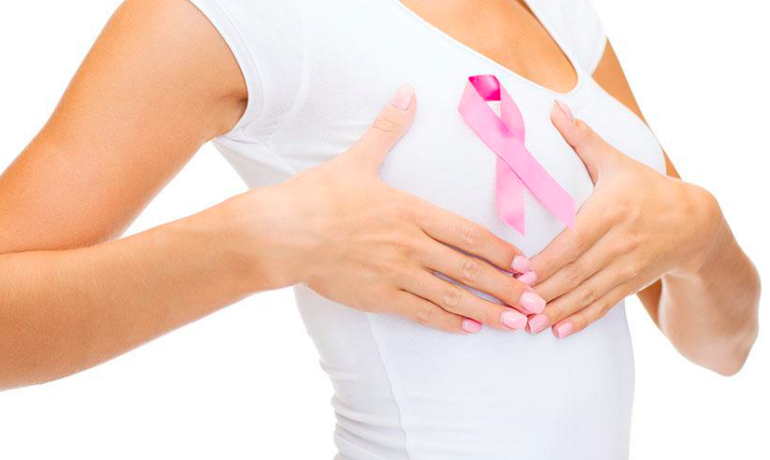The five steps to doing a breast self-exam

The five steps to doing a breast self-exam
Breast self-examination, or frequently checking your breasts on your own, can be a valuable tool for detecting breast cancer early, when it is more likely to be effectively treated. While no one test will identify all breast cancers early.
In this article, I’ll tell you how to do a breast self-exam in the five simple steps:
Step 1
Stand in front of the mirror with your shoulders straight and your arms on your hips, staring at your breasts.
Here are some things to watch for:
- Breasts that are the same size, shape, and color as they were before
- Breasts with a uniform shape and no apparent deformation or edema
Please notify your doctor if you notice any of the following changes:
- Skin that is dimpling, puckering, or bulging
- An inverted nipple or a nipple that has shifted position (pushed inward instead of sticking out)
- Swelling, redness, discomfort, or rash
Step 2
Raise your arms and examine them for the same changes.
Step 3
Examine your nipples in the mirror for any evidence of fluid leaking from one or both of them (this could be a watery, milky, or yellow fluid or blood).
Step 4
Now, while lying down, feel your breasts with your right hand on your left breast and your left hand on your right breast. Keep your fingers flat and together while applying a firm, smooth touch to the first few finger pads of your hand. Make a quarter-sized circular motion with your hands.
From your collarbone to the top of your belly, and from your armpit to your cleavage, cover the whole breast from top to bottom, side to side.
To ensure that you cover the whole breast, follow a pattern:
You can start at the nipple and work your way outwards until you reach the outside border of the breast. As if you were mowing a grass, you may also move your fingers vertically in rows. Most women appear to respond better to an up-and-down strategy. Feel all of the tissue in your breasts, from the front to the back: light pressure for the skin and tissue immediately underneath; medium pressure for the tissue in the center of your breasts; hard pressure for the deep tissue in the rear. You should be able to feel down to your ribs after you’ve reached the deep tissue.
Step 5
Lastly, when standing or sitting, feel your breasts. Many women think that feeling their breasts is easiest when their skin is moist and slick, so they prefer to conduct this step while in the shower. Use the same hand movements as in step 4 to cover your whole breast.
What to do if you come upon a lump
If you think you have a lump in your breast, don’t be alarmed. Most women experience lumps or lumpy regions in their breasts at some point in their lives, and the majority of these lumps turn out to be benign (not cancer). Non-cancerous breast lumps can be caused by a variety of factors, including natural hormonal fluctuations, a benign breast disease, or an accident.
If you discover a lump or other new and concerning breast alteration, don’t hesitate to contact your doctor. This is especially true if the changes continue longer than one menstrual cycle or appear to be getting bigger or more noticeable in some way. Whether you menstruate, wait until after your period to see if the lump or other breast change goes away on its own before seeing your doctor. Your gynecologist, main care doctor, or a nurse practitioner who works with your gynecologist or primary care doctor are the ideal people to contact since they know you and have done a breast exam on you before.
Know what to anticipate. Your doctor will take a health history and perform a physical exam of the breast at a visit to assess a breast lump, and will most likely prescribe breast imaging tests. In women under the age of 30, who are pregnant, or who are breastfeeding, ultrasound is frequently the first or only imaging test performed to assess a lump. In women over the age of 30 who are not pregnant or nursing, both an ultrasound and a mammography are usually advised to assess a lump. Your doctor may prescribe further imaging, such as MRI (magnetic resonance imaging), MBI (molecular breast imaging), and/or a biopsy, if more testing is required. He or she may also recommend a breast specialist to you.
Make certain you receive responses. It’s critical that your doctor explains the origin of the lump or other breast alteration, as well as a strategy for monitoring or treating it, if required. Don’t hesitate to get a second opinion if you’re not satisfied with the advise of the first doctor you see.
If you enjoy our post, you can bookmark our site or subscribe to our blog (upper right of the page) to be notified when new articles are published!
If you have any questions or would like to discuss something, please write to us :)Customer Service & Cooperation Proposal:[email protected]
Also!
If you want to find various types of tutors, teachers, coaches or experts,
Or want to share your knowledge and expertise to earn extra income,
Welcome to visit our main website: 1on1 Global Tutor Resource Sharing Platform
Other articles:
How to Get Better Sleep? 5 Easy Steps Help you!
Global Skill Matching and Freelance Jobs Website List
Compare 6 video chat apps for online teaching & learning
How to stop coughing? 3 best ways to share with you
Five Ways to Prevent Amnesia
Five scientific methods to increase concentration
How to Loss Weight Naturally, Easy and Fast







